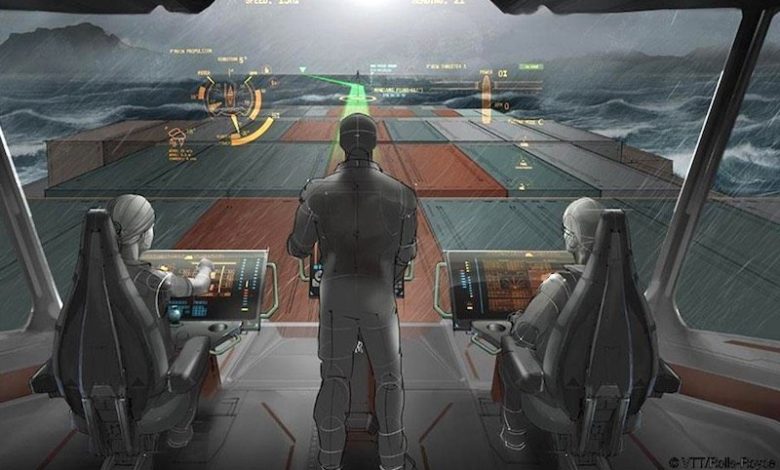Talking up technology and fetishising the future

The industry’s obsession with digitalisation risks undervaluing the human factor, writes Julie Lithgow from the Institute of Chartered Shipbrokers, in a preview of a paper she will give tomorrow at the Maritime Leadership and the Near Horizon forum in London.
Taking a moderate view about technological change in shipping isn’t really popular.
It’s much more exciting to declare that we’re in an age of unprecedented advances or decry the coming onslaught of destructive new ideas, than to conclude that the future will basically be like today with marginal improvements and slight differences.
After all, you can sell more conference tickets with the promise that attendees will get a glimpse of a transformational future than by telling them that we’re actually dealing with technology in a time of iteration.
And you can hardly attend one of the industry’s many trade shows without encountering one company or another proclaiming a revolution at hand, one that often fetishizes future technology at the expense of people.
Of course, ever increasing automation seems incredibly appealing to owners in shipping. The idea of autonomous ships passing cargo off to similarly autonomous cranes and onto autonomous trucks feels, on the surface at least, far less complex and messy than systems dependent on interactions between humans.
But even in that scenario, people will still need to be involved in the process, and how meaningful and fulfilling they find their work still matters.
One reason why technology is such a seductive solution to so many owners and operators is that it requires so little intellectual effort, only more capex and opex. It allows the patch to be applied without addressing the industry’s deeper needs.
Right now, increasing amounts of data flowing between ship and shore have not reduced the work done by crews but shifted existing effort. Captains report that they’ve actually seen an increase in paperwork as the demand from email has grown.
There’s an often-quoted statistic that 80% of accidents in shipping are down to human error, but the truth may be a little more complicated than that. A 2017 study by Croatian academics at the Faculty of Maritime Studies Rijeka, suggests that increasing levels of automation coupled with a reduction in crew levels can lead to more stress and a greater chance of accidents. Simply adding new technology doesn’t instantly make things easier or safer.
A future where human employees spend their time tending to the demands of robots is foreseeable, but it needn’t be inevitable. The Global Maritime Technology Trends 2030 report predicted the rise of three new types of robot in commercial shipping — learning (for undertaking complex tasks), practical (for handling assets) and mini (for inspections in harsh environments). While they could reduce the size of human crews, people will still be required to manage, monitor and maintain the robots.
Shipping has always been at the leading edge of introducing new technology — containerisation is a good example — but it can also be very reactive. When thinking about how to apply innovations in the industry, we should start from the principle that we would like our societies to be better every single day.
Yes, the blockchain can improve security and transparency in supply lines. Yes, drones and robots are going to play an increasing role in moving cargo. Yes, wearable technology may mean crews feel more like cyborgs.
But all of these innovations are choices and can come with unintended consequences; moving to interactions between autonomous vessels and port infrastructure increases the need for data security and the risks of interference from malicious actors.
This is not an argument for conservatism in shipping or for fear about the future technology could bring. Instead, it’s about developing smart ways of managing technology that continue to see the value of human interactions and experience in the process. It’s about using technology to improve human-centred work, not turning into simple biological components within an automated system.
When something unexpected happens onboard a ship, there will still be a need for human creativity and the ingenuity that comes from experience. We are still a long way from autonomous systems that are capable of truly non-schematic thinking.
It’s likely that changes in shipping technology will simply see a shift in where humans sit in the process. Crews that were once on the bridge of a vessel may be relocated to the shore, controlling and monitoring ships from a distance.
In that case, technology would allow workers a more conventional home life, without long stretches at sea. For many that will seem like a benefit but for others it will mean losing what attracted them to the job in the first place.
We need to adopt new technologies with an eye to a long term vision and not simply to solving short term problems. Industries like finance can turn to systems that remove humans entirely because they are dealing in the virtual. For shipping, so rooted in the physical world, the future will still be human.

When I first saw the title of this article, I expected to learn more about how SHIPBROKING was going to incorporate digitalization. Instead I saw a defense of manning and operations. Is this a classic pivot away from the proximity of digitalization coming into the shipbroking space?
Our industry needs to innovate and optimize. It needs to become more efficient to be sustainable. Yes, I’m putting on SHIPPINGInsight this week in Stamford, CT as a SERVICE to our industry so we can COLLECTIVELY embrace the changes necessary to remain viable.
I say– Keep Optimizing!!